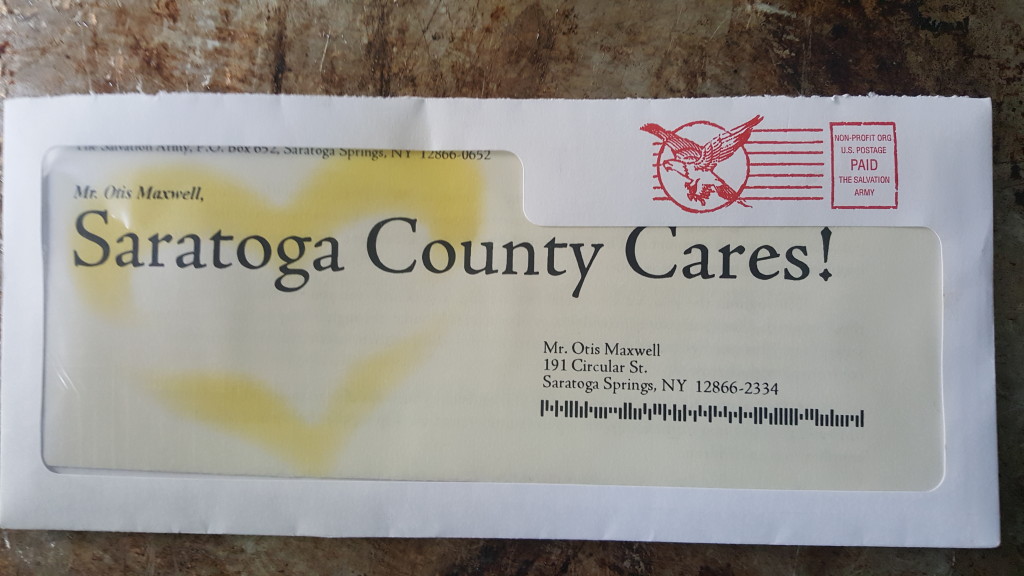Your personalization vendor has a great idea: add variable fields to localize direct mail by mentioning the reader’s geographical location. This is especially effective if you’re a national brand and you want to connect with prospects on a grassroots level. Hence this month’s example from the Salvation Army:

The biggest problem with this effort is something that can happen to any marketer–which is why I am sharing this even though I have beat up on these poor folks and their localization in the past. I know where I live, so making a reference to that place has no meaning unless you add another attribute. For example, “last night 368 people in Saratoga County went to bed hungry. Here’s your chance to help them get a good meal”. Just saying “this is a mailer about Saratoga County” is a huge so-what because almost every piece of localized mail, whether it’s a bill or a message from a civic group, says the same thing.
A secondary problem is that “Saratoga County” is a meaningless term. Saratoga County is a gerrymandered entity and I feel no affinity for my fellow citizens down in Waterford or across the lake in Edinburg. I am a resident of Saratoga Springs, a city, so please identify me/yourself as such. If you’re going to localize, take the time to research local usages like this and avoid faux pas. (A favorite, which I searched unsuccessfully for just now, was a liquor ad localized to San Francisco from a few years back in which the tippler looking for an excuse to drink checks off “Saw a hippie at Haight”. It should be “in the Haight” of course and that boner immediately brands the marketer as a carpetbagger.)
Here’s another interesting example of personalization/localization. A Canadian ad firm drove Porsches to people’s homes, parked them in the driveway and took a picture, then drove away and mailed the prospect a picture of the car in their own driveway with the caption “it’s closer than you think”. In friendly Canada it drew accolades and 32% response rate. In the U.S. it would have drawn lawsuits. Know your local audience.